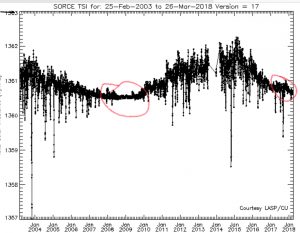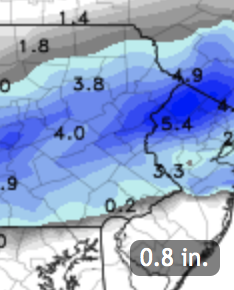A front moved through today, associated with a dip in the jetstream that will allow cold air to move in for the next few days.
The frontal boundary stalled to our south and multiple models are showing the development of low pressure that will move along the front bringing significant precipitation. Both the NAM and GFS show QPF values, as high as 0.98 inches of water.
There are currently differences between the timing and thermal profiles of the models and those differences result in significant differences in the precipitation type (rain /sleet/snow).
The NAM is warmer and shows little snow until the afternoon. The GFS is colder and faster, and shows as much as 4-6 inches of snow!
We also need to include consideration of sun angle in April and resultant solar insolation through clouds along with daytime vs nighttime Spring snows. Too early to make a call, but interesting weather for April. Stay tuned.
Wednesday 10:45 pm -Tonight’s NAM continues with a thermal profile that is too warm for snow during much of the storm around Philadelphia.
Upper Bucks and Montgomery County as well as western Chester county may have over 4 inches, as measured on grassy surfaces, but the immediate PHL area is mostly rain and some sleet, changing to snow late in the game. A light coating possible. Expect changes


